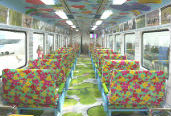In the past, this area has been strictly off limits to the public, but this past spring, Korail introduced its Gyeongui Line DMZ Train which offers travelers an opportunity to see some ecological sections of the DMZ. Korail has plans to launch a second DMZ Train -- the Gyeongwon Line -- this August.
Unlike the existing DMZ train, which goes to the DMZ in Gyeonggi-do (Gyeonggi Province) to the west of Seoul along the Imjingang River and to Dorasan Station, the new DMZ train will bring tourists to a section of the DMZ in Cheorwon-gun (county) and along the Hantangang River of Gangwon-do (Gangwon Province).
The original 223 kilometer Gyeongwon Line was built initially in 1914 to transport agricultural produce from Cheorwon and seafood from Wonsan. Due to the Korean War, however, the railroad was cut and shortened to 94 kilometers, linking Yongsan Station in Seoul with Baengmagoji Station in Cheorwon County.
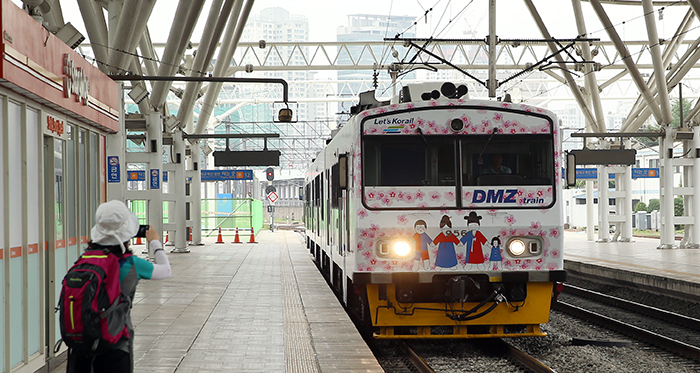
The new DMZ Train will operate along the Gyeongwon Line once a day starting this August, linking Seoul and Baengmagoji Station in Cheorwon. (photo: Jeon Han)
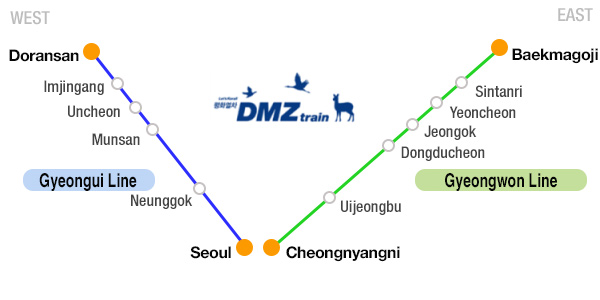
Departing Seoul Station, it takes about 2 hours and 20 minutes to get to Baengmagoji Station, the northernmost station in South Korea. The name of the station was derived from the name of a small hill in Cheorwon that was the site of one of the bloodiest battles of the Korean War, the Battle of Baengmagoji.
After hopping on a bus at Baengmagoji Station, passengers will find a large field where birds of all kinds enjoy the peaceful air. Cheorwon was once a large, prosperous city at the heart of the 35,000 hectare Cheorwon Plain, which used to produce plentiful amounts of grain. The war, however, turned the city to ashes. About one third of the city was located within 2 kilometers of the ceasefire line, and so fell within the DMZ. The city has many traces of modern and current Korean history, showing symbolically the reality of the divided Korean Peninsula.
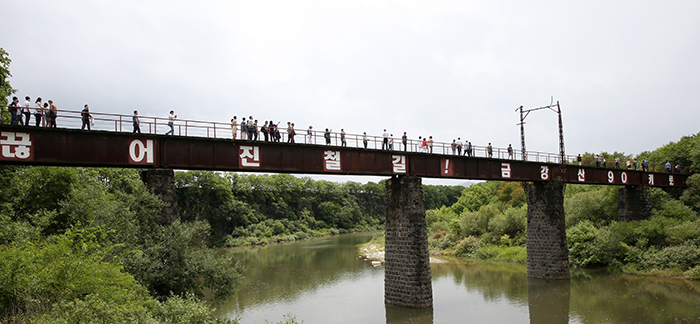
Tourists walk along the Geumgangsan Mountain Electric Railroad Bridge (the Kumgang Mountain Electrical Railway Bridge). (photo: Jeon Han)
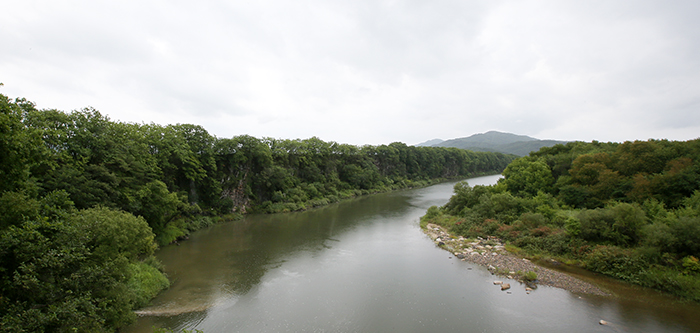
The view of the Hantanggang River as seen from the Geumgangsan Mountain Electric Railroad Bridge (the Kumgang Mountain Electrical Railway Bridge). (photo: Jeon Han)
The bus arrives at the Geumgangsan Mountain Electric Railroad Bridge (the Kumgang Mountain Electrical Railway Bridge) after passing through a military checkpoint.. This bridge was built in 1926 as part of the Kumgang Mountain Electrical Railway. When standing on the bridge, the scenery is dominated by the Hantangang River flowing underneath. “The railroad is cut. Ninety kilometers ahead lie the Geumgangsan Mountains,” is written on the side of the bridge. The 117-kilometer long railway was used to exploit underground resources during colonial times. North Korea also used it to transport war materials during the Korean War, but any operations have now been stopped due to the ceasefire.
The bus enters a military base, passing through another checkpoint after leaving the bridge. After ascending a hill, a military observation point greets the visitors. Here, people can learn more about the Battle of Baengmagoji. It took about 20,000 lives from both sides, all simply in order to win a small hill during the war. The ownership of the hill changed hands 24 times. The hill got its name as it lost its original shape as a result of the artillery and gun shots, and looked like a white horse, a baengma, lying down.
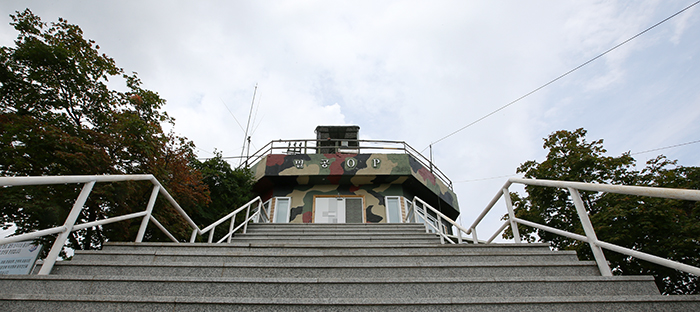
The observation point from below. (photo: Jeon Han)
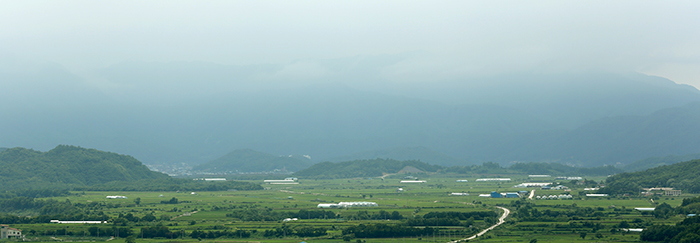
The view from the observation point, toward the south. (photo: Jeon Han)
The bus then heads to Woljeongri Station, a small train yard where rail stock was stored or shunted before leaving for Wonsan, now in North Korea. Visitors can find the remains of a train used by the North Korean army and which was bombed by U.N. forces. The windows of the train car are twisted toward the sky and the frame and the body of the train are crooked and rusty.
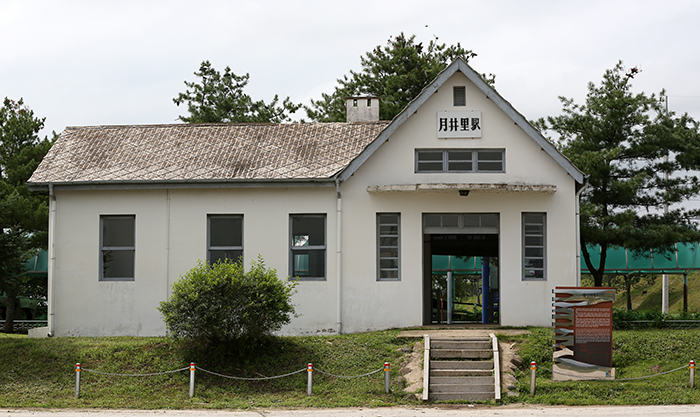
Woljeongri Station (photo: Jeon Han)
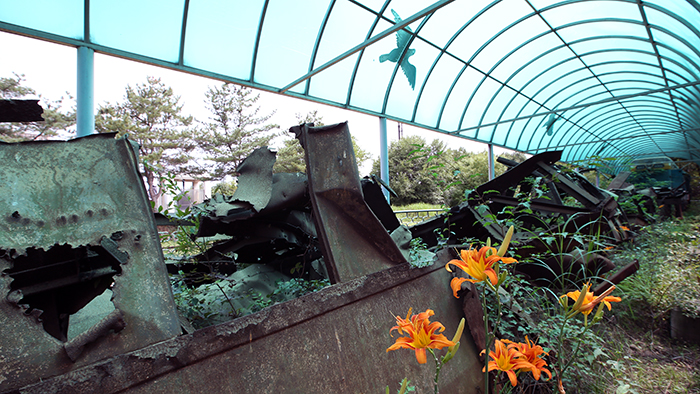
The remains of a train used by North Korea sit at Woljeongri Station. (photo: Jeon Han)
The highlight of the tour is the North Korean Labor Party Cheorwon Office Building. This building was built by the North Korean Labor Party in 1946 using a Russian architectural style. Visitors can only see the foundation and frame of the three-storied building. The damaged surface of the building shows traces of bombings from the war. In fact, human bones and tools used for torture have also been found in and around the building, including an air raid shelter. This building has now become a venue for peace and hope and it now hosts functions wishing for peace between the two Korea. One such function, the “Cheorwon DMZ Peace Concert -- Concerto for Peace,” took place in June 2013 to mark the 60th anniversary of the armistice.
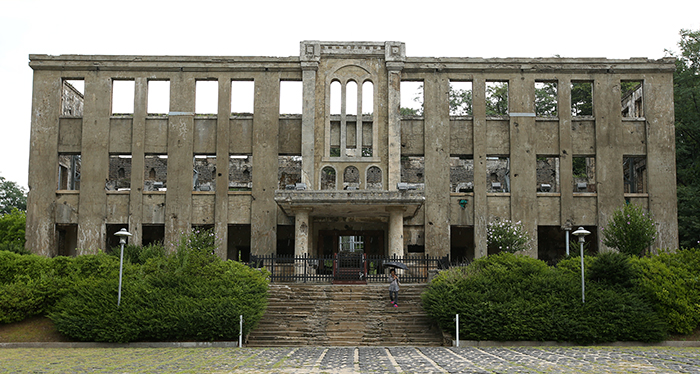
The North Korean Labor Party Building in Cheorwon. (photo: Jeon Han)
Cheorwon is also home to the Cheorwon Crane Park, where visitors can learn more about the various ecosystems found in the uninhabited DMZ and about the monument to the Battle of Baengmagoji, where commemorative event are held every October. Visitors to Cheorwon can also see how prosperous the city was in the past, before the war, by seeing the sites for the Cheorwon Agricultural Products Inspection Center, the Cheorwon Ice Storehouse and the Cheorwon Financial Association, all remnants of the city's bygone agricultural prosperity.
Many tourists today visit Cheorwon to bird watch, as the city is also known as a haven for migratory birds. A variety of birds flock to the city's natural areas, including some rare species which face extinction, such as certain species of cranes, geese, eagles and swans. As part of its eco-friendly image, Cheorwon hosts a special bird-watching event every January 1.
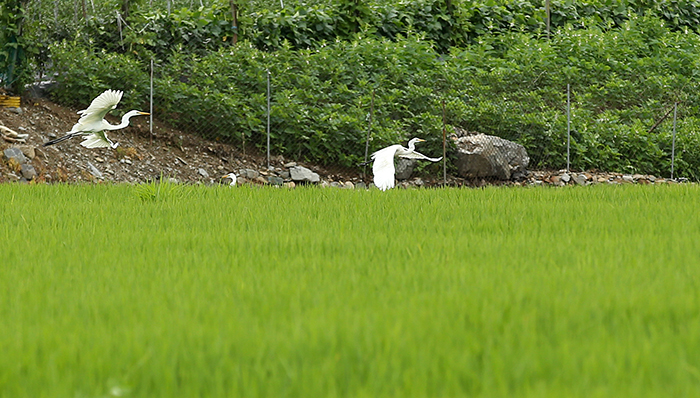
Cranes are often spotted in Cheorwon. (photo: Jeon Han)
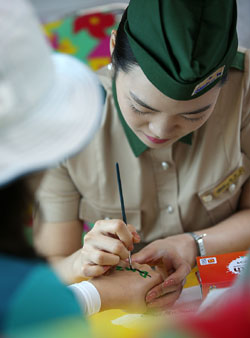
A car attendant paints the hand of a passenger on the new DMZ Gyeongwon train. (photo: Jeon Han)
Korail's new Gyeongwon DMZ Train will operate once a day starting this August. The train departs Seoul Station at 9:27 a.m. and arrives at Baengmagoji Station at 11:44 a.m. From Baengmagoji Station, visitors can choose whether to take a security-themed tour or a city tour of Cheorwon, both by special tour buses.
The train departs for Seoul from Baengmagoji Station at 4:06 p.m. and arrives at Seoul Station at 6:35 p.m. A one-way ticket costs KRW 12,400 for adults during weekdays and KRW 12,800 during weekends. The return ticket costs KRW 23,000.
More information about the train is available at the Korail homepage in English, Japanese and Chinese. http://www.letskorail.com/ebizprd/EbizPrdTrainDMZIntro_info.do
By Yoon Sojung
Korea.net Staff Writer
arete@korea.kr
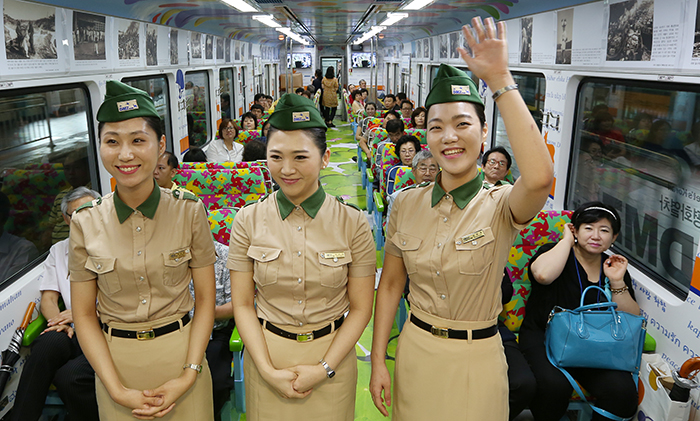
Crew members and passengers prepare to depart Seoul Station on board the new DMZ train that runs along the Gyeongwon Line. (photo: Jeon Han)
